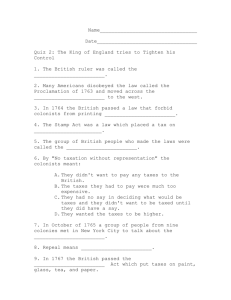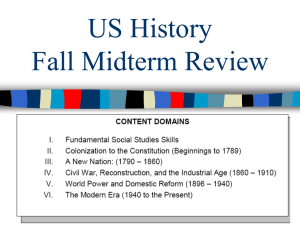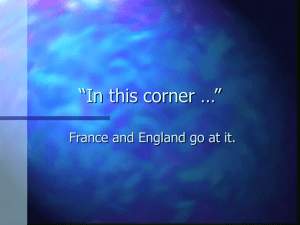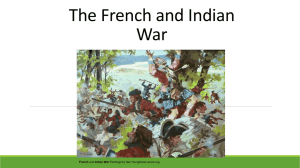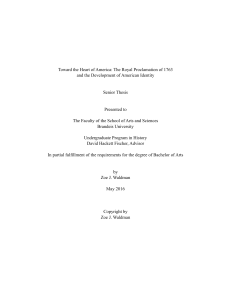June 8, 2015 Proclamation of 1763
advertisement
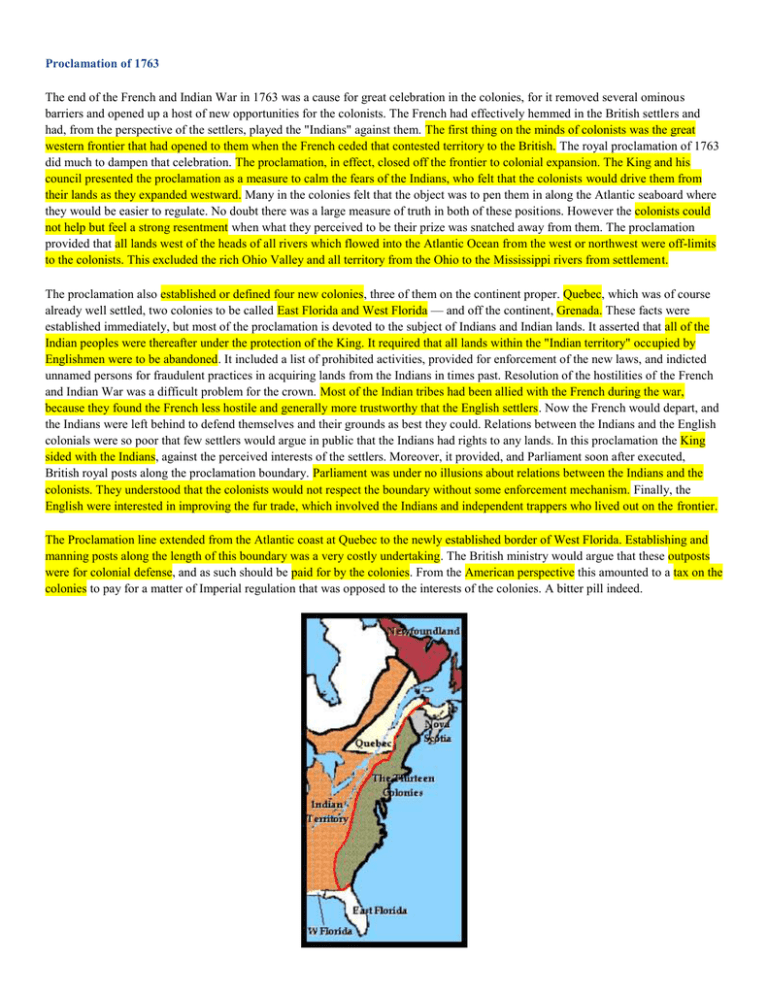
Proclamation of 1763 The end of the French and Indian War in 1763 was a cause for great celebration in the colonies, for it removed several ominous barriers and opened up a host of new opportunities for the colonists. The French had effectively hemmed in the British settlers and had, from the perspective of the settlers, played the "Indians" against them. The first thing on the minds of colonists was the great western frontier that had opened to them when the French ceded that contested territory to the British. The royal proclamation of 1763 did much to dampen that celebration. The proclamation, in effect, closed off the frontier to colonial expansion. The King and his council presented the proclamation as a measure to calm the fears of the Indians, who felt that the colonists would drive them from their lands as they expanded westward. Many in the colonies felt that the object was to pen them in along the Atlantic seaboard where they would be easier to regulate. No doubt there was a large measure of truth in both of these positions. However the colonists could not help but feel a strong resentment when what they perceived to be their prize was snatched away from them. The proclamation provided that all lands west of the heads of all rivers which flowed into the Atlantic Ocean from the west or northwest were off-limits to the colonists. This excluded the rich Ohio Valley and all territory from the Ohio to the Mississippi rivers from settlement. The proclamation also established or defined four new colonies, three of them on the continent proper. Quebec, which was of course already well settled, two colonies to be called East Florida and West Florida — and off the continent, Grenada. These facts were established immediately, but most of the proclamation is devoted to the subject of Indians and Indian lands. It asserted that all of the Indian peoples were thereafter under the protection of the King. It required that all lands within the "Indian territory" occupied by Englishmen were to be abandoned. It included a list of prohibited activities, provided for enforcement of the new laws, and indicted unnamed persons for fraudulent practices in acquiring lands from the Indians in times past. Resolution of the hostilities of the French and Indian War was a difficult problem for the crown. Most of the Indian tribes had been allied with the French during the war, because they found the French less hostile and generally more trustworthy that the English settlers. Now the French would depart, and the Indians were left behind to defend themselves and their grounds as best they could. Relations between the Indians and the English colonials were so poor that few settlers would argue in public that the Indians had rights to any lands. In this proclamation the King sided with the Indians, against the perceived interests of the settlers. Moreover, it provided, and Parliament soon after executed, British royal posts along the proclamation boundary. Parliament was under no illusions about relations between the Indians and the colonists. They understood that the colonists would not respect the boundary without some enforcement mechanism. Finally, the English were interested in improving the fur trade, which involved the Indians and independent trappers who lived out on the frontier. The Proclamation line extended from the Atlantic coast at Quebec to the newly established border of West Florida. Establishing and manning posts along the length of this boundary was a very costly undertaking. The British ministry would argue that these outposts were for colonial defense, and as such should be paid for by the colonies. From the American perspective this amounted to a tax on the colonies to pay for a matter of Imperial regulation that was opposed to the interests of the colonies. A bitter pill indeed.
